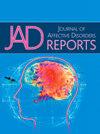Association between the lean-to-fat mass ratio and depressive symptoms in adult Peruvian population: A cross-sectional analysis
Q3 Psychology
引用次数: 0
Abstract
Background
Previous studies on the relationship between body composition and depressive symptoms have focused on fat or lean mass separately. We aimed to examine the association between the lean-to-fat mass ratio (LFMR) and depressive symptoms in the adult Peruvian population.
Methods
This cross-sectional study used the Peruvian Demographic and Health Survey 2023. Adults aged 18–59 years were included, while pregnant women and individuals with implausible anthropometric measurements were excluded. Depressive symptoms were assessed using the Patient Health Questionnaire-9 (PHQ-9), while the exposure variable, the LFMR, was calculated using validated regression equations derived from the National Health and Nutrition Examination Survey (NHANES) database, which included the Latino population. Nested regression models assessed the relationship between the LFMR and depressive symptoms, including linear and quadratic terms. Models were adjusted for sociodemographic, health, and behavioral factors. Marginal effects of LFMR were plotted.
Results
24,674 subjects were included. A non-linear association between LFMR and depressive symptoms, with a J-shaped curve was found. An initial decrease in depressive symptoms score with increasing LFMR was observed in the adjusted model (β: −1.89; 95 %CI: −2.24, −1.54), followed by an increase in PHQ-9 score at higher LFMR values (β: 0.23; 95 %CI: 0.18, 0.28).
Limitations
Lean and fat mass were estimated via equations rather than direct measurements.
Conclusions
These results underscore a non-linear association between the LFMR and depressive symptoms among Peruvian adults. An optimal balance between lean and fat mass, rather than focusing solely on one component, may be crucial in reducing depressive symptoms.
秘鲁成年人瘦脂比与抑郁症状的关系:一项横断面分析
背景以往关于身体成分与抑郁症状之间关系的研究主要集中在脂肪或瘦质量上。我们的目的是研究秘鲁成年人的瘦脂质量比(LFMR)与抑郁症状之间的关系。方法本横断面研究采用秘鲁人口与健康调查2023。年龄在18-59岁的成年人被纳入研究对象,而孕妇和具有不合理人体测量值的个体被排除在外。采用患者健康问卷-9 (PHQ-9)对抑郁症状进行评估,而暴露变量LFMR则使用来自国家健康和营养检查调查(NHANES)数据库的有效回归方程进行计算,其中包括拉丁裔人口。嵌套回归模型评估了LFMR和抑郁症状之间的关系,包括线性和二次项。模型根据社会人口、健康和行为因素进行了调整。绘制了LFMR的边际效应。结果共纳入24674名受试者。LFMR与抑郁症状呈非线性关系,呈j型曲线。在调整后的模型中,抑郁症状评分最初随着LFMR的增加而下降(β: - 1.89;95% CI:−2.24,−1.54),其次是高LFMR值时PHQ-9评分增加(β: 0.23;95% ci: 0.18, 0.28)。局限性瘦肉和脂肪量是通过方程而不是直接测量来估计的。结论:这些结果强调了秘鲁成年人中LFMR与抑郁症状之间的非线性关联。瘦脂肪量的最佳平衡,而不是只关注一种成分,可能对减轻抑郁症状至关重要。
本文章由计算机程序翻译,如有差异,请以英文原文为准。
求助全文
约1分钟内获得全文
求助全文
来源期刊

Journal of Affective Disorders Reports
Psychology-Clinical Psychology
CiteScore
3.80
自引率
0.00%
发文量
137
审稿时长
134 days
 求助内容:
求助内容: 应助结果提醒方式:
应助结果提醒方式:


